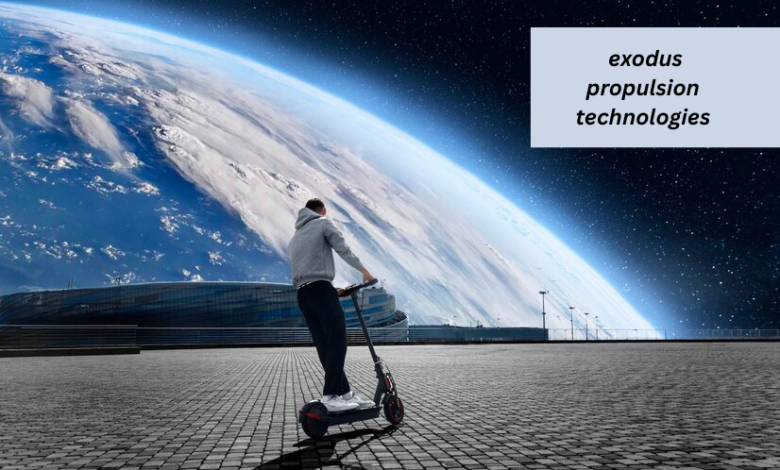
The future of space exploration is being reshaped by groundbreaking advancements in propulsion technologies, and Exodus Propulsion Technologies stands at the forefront of this revolution. With the increasing demand for faster, more efficient, and sustainable space travel, companies like Exodus are pioneering innovative solutions that could redefine interstellar missions, satellite deployment, and deep-space exploration.
Traditional propulsion systems, such as chemical rockets, have long been the backbone of space missions. However, their limitations—high fuel consumption, excessive costs, and environmental concerns—have spurred the need for alternative technologies. Exodus Propulsion Technologies is addressing these challenges by developing cutting-edge propulsion methods that promise higher efficiency, reduced travel time, and lower operational costs.
This article explores the key technologies developed by Exodus, their potential impact on the aerospace industry, and answers to frequently asked questions about their revolutionary systems.
1. The Need for Advanced Propulsion Systems
Space exploration has always been constrained by the limitations of traditional propulsion methods. Chemical rockets, while powerful, require enormous amounts of fuel, generate significant pollution, and are expensive to launch. As humanity sets its sights on Mars, asteroid mining, and beyond, more efficient propulsion systems are essential.
Exodus Propulsion Technologies is working on solutions that overcome these barriers. By leveraging electromagnetic propulsion, plasma thrusters, and other advanced concepts, the company aims to make space travel faster, cheaper, and more sustainable. These innovations could enable longer missions, reduce reliance on Earth-based resources, and open new possibilities for commercial and scientific ventures in space.
2. Key Propulsion Technologies Developed by Exodus
2.1 Electromagnetic Propulsion (EM Drive)
One of the most talked-about innovations from Exodus is its work on Electromagnetic Propulsion, often referred to as the EM Drive. Unlike conventional rockets that expel mass for thrust, the EM Drive generates propulsion by bouncing microwaves inside a closed chamber, creating thrust without the need for propellant.
While the concept has been met with skepticism, recent experiments and theoretical models suggest that it could revolutionize space travel. If successfully scaled, EM Drives could enable spacecraft to reach Mars in weeks instead of months, drastically cutting mission durations and costs.
2.2 Plasma Thrusters
Another breakthrough from Exodus is the development of high-efficiency plasma thrusters. These systems use electric fields to accelerate ionized gas (plasma) at extremely high speeds, producing thrust with far greater efficiency than chemical engines.
Plasma thrusters are ideal for long-duration missions, such as interplanetary travel and satellite station-keeping. They require significantly less fuel than traditional rockets, reducing launch weights and operational expenses. Exodus’s advancements in this field could make deep-space missions more feasible and economically viable.
2.3 Nuclear Thermal Propulsion (NTP)
Exodus is also exploring Nuclear Thermal Propulsion (NTP), a technology that uses nuclear reactors to heat propellants like hydrogen to extreme temperatures, creating high-velocity exhaust. NTP offers a compelling middle ground between the high thrust of chemical rockets and the efficiency of electric propulsion.
With potential applications in crewed missions to Mars and beyond, NTP could drastically reduce transit times while maintaining safety and reliability. Exodus’s research in this area focuses on optimizing reactor designs and ensuring fail-safe mechanisms for human spaceflight.
3. The Impact of Exodus Propulsion Technologies on Space Exploration
The innovations pioneered by Exodus have far-reaching implications for the future of space travel.
3.1 Faster Interplanetary Travel
One of the most significant benefits of advanced propulsion is the reduction in travel time. Missions that currently take years could be completed in months or even weeks. For instance, a Mars journey using traditional propulsion takes about seven months, but with Exodus’s EM Drive or plasma thrusters, this could be cut to just a few weeks.
3.2 Lower Costs and Increased Accessibility
Reducing fuel consumption and launch weights directly translates to lower costs. Private companies, research institutions, and even governments could deploy more missions at a fraction of current expenses, democratizing access to space.
3.3 Sustainable Space Exploration
With growing concerns over space debris and pollution from rocket launches, sustainable propulsion is critical. Electric and plasma-based systems produce minimal waste, making them environmentally friendly alternatives to conventional rockets.
3.4 Enabling Deep-Space Missions
Technologies like NTP and advanced ion thrusters could make missions to the outer solar system—such as Europa, Titan, or even interstellar probes—feasible within reasonable timeframes. This opens doors for unprecedented scientific discoveries and potential colonization efforts.
4. Challenges and Future Prospects
Despite the promise of these technologies, several challenges remain.
4.1 Technical and Engineering Hurdles
Scaling experimental propulsion systems like the EM Drive to practical levels requires overcoming significant engineering obstacles. Thermal management, power generation, and structural integrity under extreme conditions are key areas of focus.
4.2 Regulatory and Safety Concerns
Nuclear propulsion, in particular, faces strict regulatory scrutiny due to radiation risks. Ensuring fail-safe mechanisms and public acceptance will be crucial for its adoption.
4.3 Funding and Industry Adoption
Securing long-term investment and convincing aerospace stakeholders to transition from proven systems to experimental technologies will be a major hurdle. However, with increasing interest from private space companies, the future looks promising.

Conclusion
Exodus Propulsion Technologies is at the cutting edge of a new era in space exploration. By developing revolutionary propulsion systems such as the EM Drive, plasma thrusters, and nuclear thermal propulsion, the company is paving the way for faster, cheaper, and more sustainable space travel.
While challenges remain, the potential benefits—reduced mission times, lower costs, and expanded deep-space capabilities—make these advancements crucial for the future of humanity’s presence in space. As research progresses, Exodus could very well become a cornerstone of interstellar exploration, bringing us closer to the dream of becoming a multi-planetary species.
Frequently Asked Questions (FAQs)
Q1: What makes Exodus Propulsion Technologies different from traditional rocket systems?
Exodus focuses on advanced propulsion methods like electromagnetic drives and plasma thrusters, which are more fuel-efficient and faster than chemical rockets. These systems reduce costs and enable longer missions.
Q2: Is the EM Drive scientifically proven?
While the EM Drive remains controversial, recent experiments and theoretical models suggest it could work. Further testing and scaling are needed to confirm its viability for space missions.
Q3: How does nuclear thermal propulsion work, and is it safe?
NTP uses a nuclear reactor to heat propellant, creating high-thrust exhaust. Safety measures include robust shielding and fail-safe mechanisms to prevent radiation leaks.
Q4: When can we expect these technologies to be used in actual space missions?
Some plasma thrusters are already in use for satellites. EM Drives and NTP may take another decade to mature, depending on funding and technological breakthroughs.
Q5: Will these propulsion systems make space travel affordable for private companies?
Yes, by reducing fuel needs and launch weights, advanced propulsion can significantly lower costs, making space more accessible to commercial entities.
Q6: What are the environmental benefits of Exodus’s technologies?
Electric and plasma propulsion produce minimal pollution compared to chemical rockets, contributing to more sustainable space exploration.



